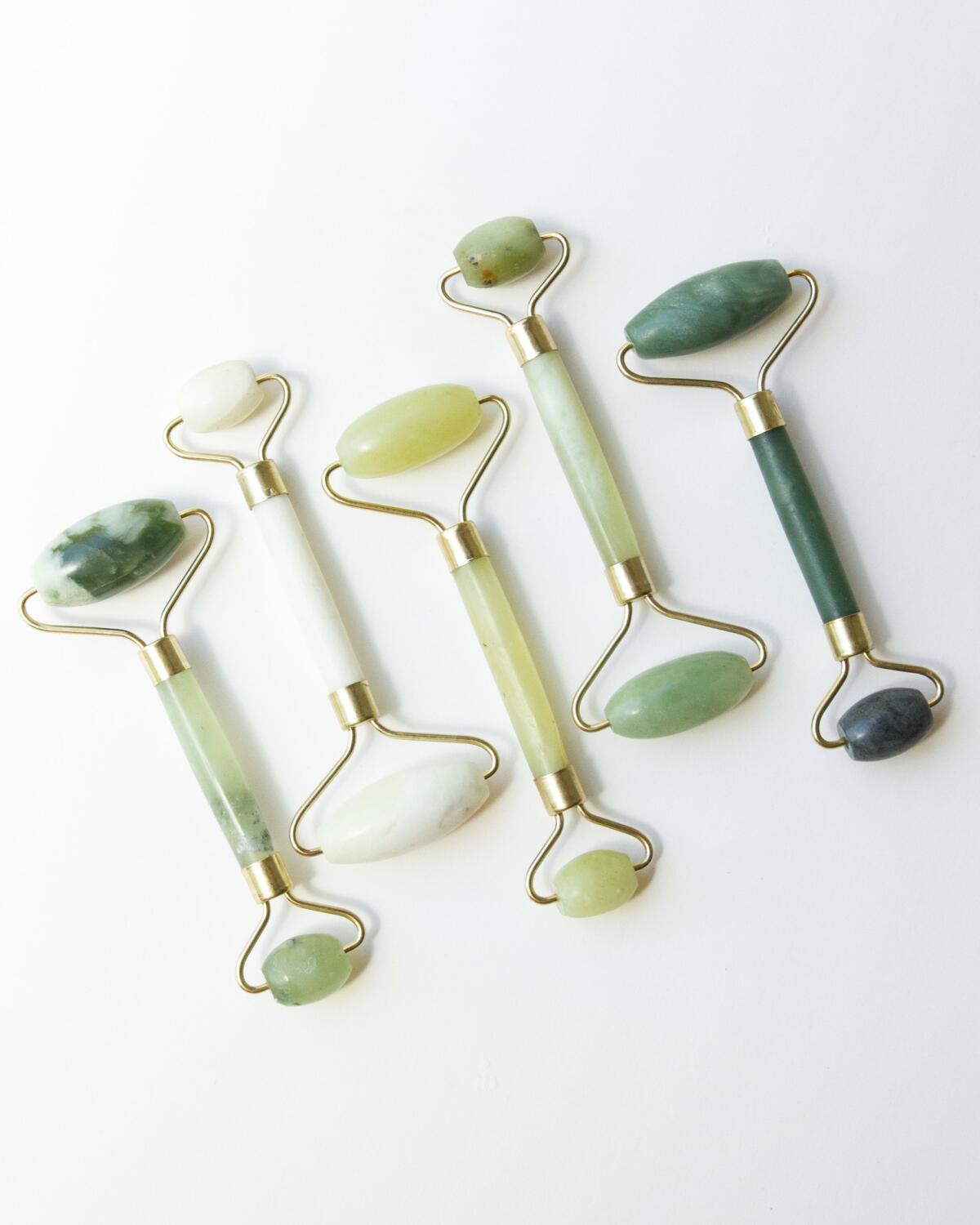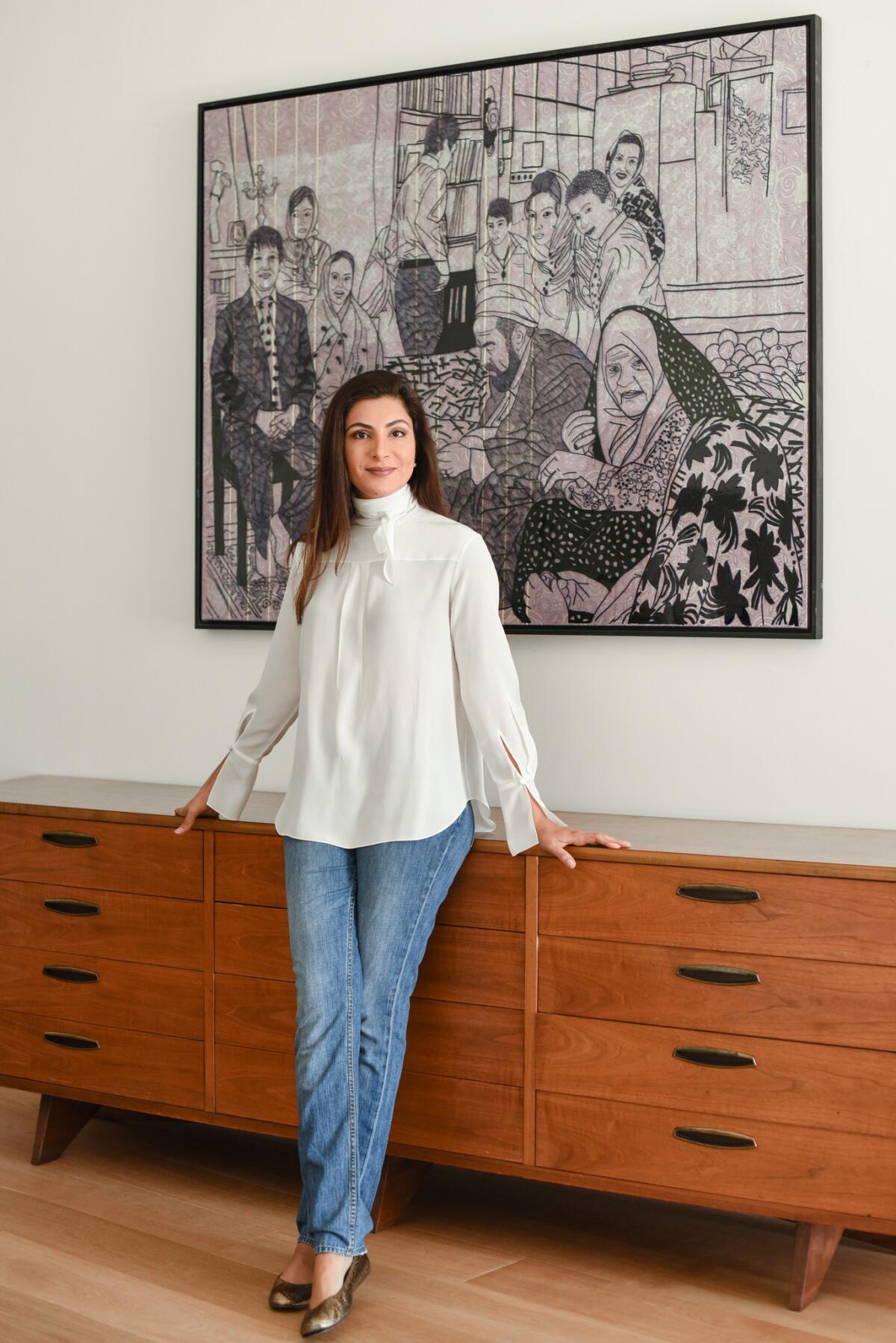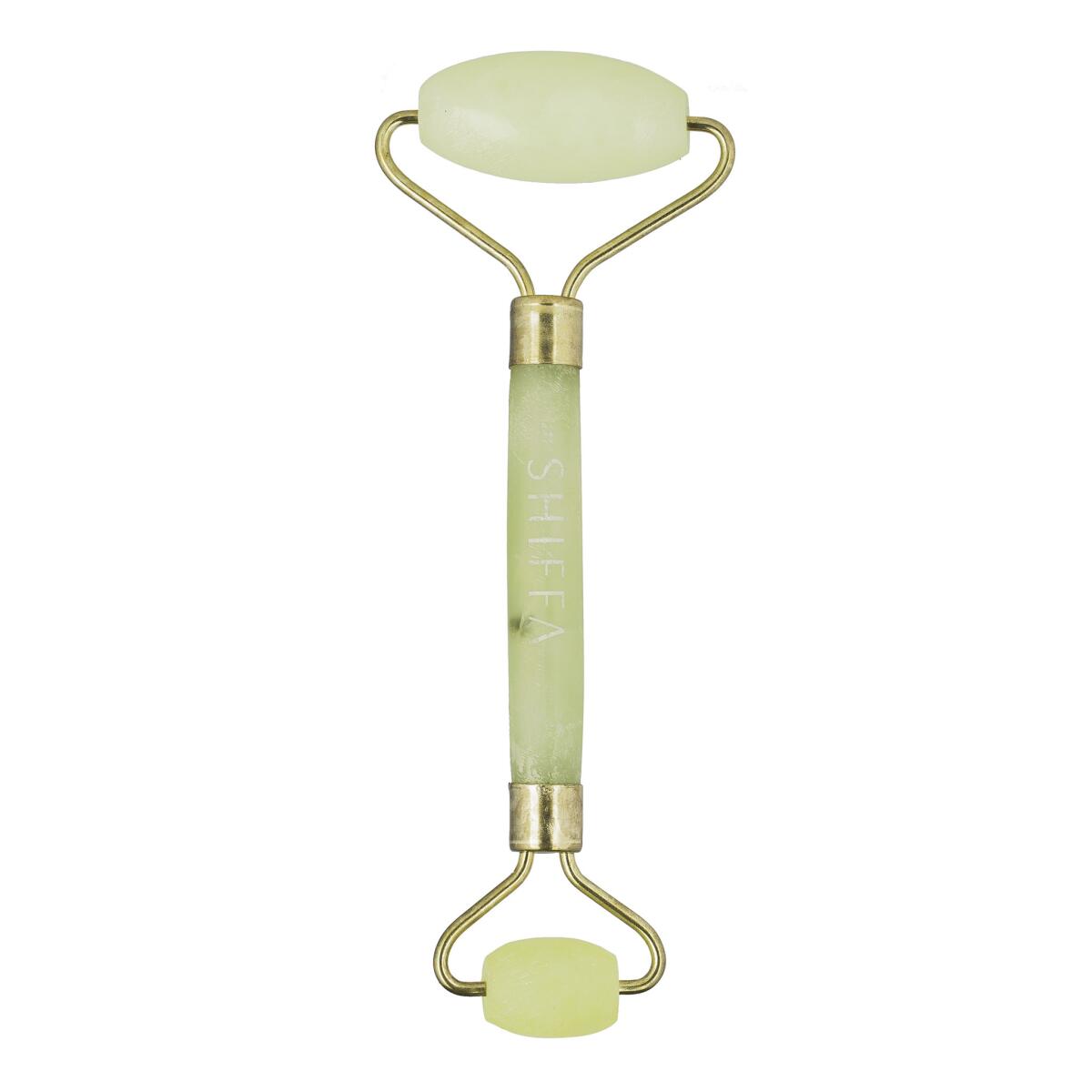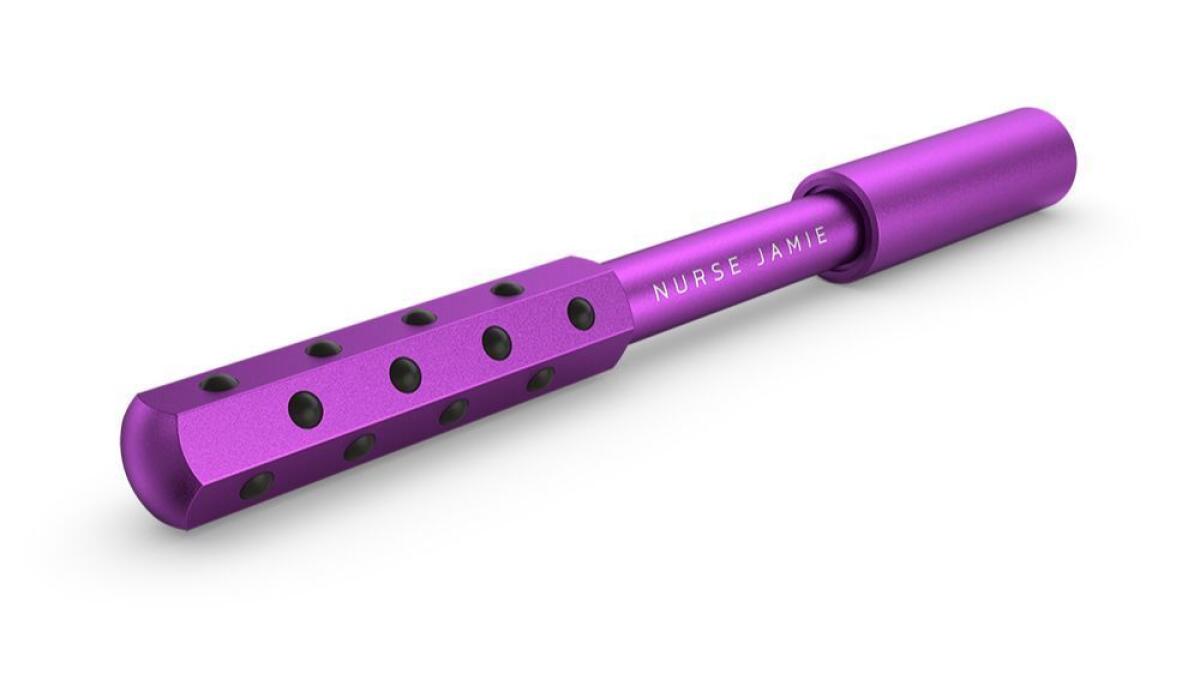Why millennials are fixated on jade rollers, ancient Chinese beauty tools
An ancient Chinese skin-care tool purchased on Amazon and priced at $7.98? This was beauty superinfluencer Marianna Hewitt’s top-selling affiliate-linked product in 2017, according to Reward Style, the influencer network that helps content creators monetize their content. The aforementioned beauty tool — known as a jade roller — accounted for thousands of units sold. Hewitt linked to the jade roller from a video she posted to her YouTube account in July, a tutorial request from curious followers who responded to an Instagram story of her using the tool on herself.
“The video did really well, better than the average video [on my account] and it’s one of those evergreen videos that gets watched over and over — it gets shared a lot,” said Hewitt. “Everyone is interested in it — they’ve either seen it and they want to know how to use it, or they’ve never seen it before and want to know what it is.”
So what exactly is a jade roller? The actual tool is essentially a tiny rolling pin made of jade stone, designed to be swept across the face for a cooling sensation and anti-inflammatory, lymph-draining effect. Its origin story is vague, but most brands that sell the roller concur that it has been used in Chinese beauty rituals for centuries. The rollers are also said to have mystical powers, as the jade stone itself is said to represent healing and protection and promote qualities such as wisdom, balance and peace.
Hewitt discovered the jade roller in a story she read online last year, and was quick to share her find with her 784,000 Instagram followers.
“Of course, the first thing I ever do is search to buy on Amazon, and they were only like $7, so of course I added to cart,” said Hewitt of the jade roller. “Maybe if the price point was higher, I wouldn’t have impulse-bought it. There are also a lot more advanced tools out there, but this is pretty simple — once I got around to playing with it and using it on my Instagram stories, my followers were like, ‘Oh my God, can you make a video?”

While Hewitt is one of the more high-profile content creators to promote the jade roller, she certainly isn’t the only one — a quick Internet search yields a slew of content on how to use the tool from media outlets like Vogue and Well & Good, all published between late 2016 and early this year, with pondering, click-bait titles such as “We Put the Jade Facial Rollers You’ve Been Seeing Everywhere to the Test.” Pinterest searches for facial rollers were up 345 percent in 2017, according to the platform.
Exactly how the jade roller became a staple of Internet skin-care content is as unclear as its origin story — though Alicia Keys’ makeup artist Dotti told WWD she can trace it back to a 2016 article published by W, in which she is quoted as saying she routinely uses the tool on the Grammy winner, who had earlier that year penned an essay for Lenny Letter proclaiming her stance on wearing minimal to no makeup in public.
Regardless, the jade roller is experiencing a cultural zeitgeist moment that has transcended the slowing beauty device market in the U.S. — The NPD Group tracked sales for the prestige facial skin-care device category as $207.2 million in 2017, down 11 percent from the year prior — and it’s not just influencers, but beauty brands and retailers who are tapping into the trend.
The jade roller’s low price point and ease of use are just two of the qualities that seem to have struck a cord with Millennial beauty consumers like Hewitt’s followers. Millennials are a group that demands high-quality products for a value and for instant and visible results, and aesthetically pleasing items that will garner Instagram likes — the jade roller delivers on all three. Not to mention, as WWD reported last year, Millennials have more of a penchant for New Age wisdoms and nontraditional spiritual practices than any other consumer group. Consider Mary-Kate Olsen and Ashley Olsen’s The Row fashion show earlier this month, where the designers handed out a selection of healing crystals as a parting gift for those in the audience.
Skin-care brands are finding that adding a jade roller to their assortment is a way to boost unit sales and glean interest from new retail partners who are eager to get the hyped product on-shelf. In the U.S., the once-obscure jade roller was primarily used by holistic-leaning aestheticians and makeup artists and could only be procured primarily via online marketplaces like Etsy and Amazon. Makeup artist Dotti bought her original jade roller — she still has it — from a small store on Prince Street that no longer exists. But an influx of brands are selling jade rollers in mainstream beauty retailers such as Nordstrom and Free People.
Seattle-based skin-care brand Herbivore Botanicals discovered the jade roller’s allure in a similar fashion as Hewitt. “Someone on Instagram posted a photo of our products with a jade roller, and we were like, ‘Oh that’s cool,’ so we reposted it and we got thousands of comments [asking] about the tool and where it could be bought,” said Alison Kerns, brand director for Herbivore Botanicals, which sells a jade facial roller on its web site for $25 and a rose quartz roller for $45. “We started researching where to get it and how quickly we could get it, and it all started because of that Instagram post. We didn’t know how big it was going to be, so our first order was 25 pieces and it [immediately] sold out.”

Due to the jade roller’s success, Kerns said Herbivore is looking at adding tools, such as the gua sha, a flat jade stone used in traditional Chinese medicine treatments said to stimulate oxygenated blood flow. The jade roller also garners the most interest from retailers. “It’s probably our number-one question [from retailers],” said Kerns. “Like, ‘Hey, we love your assortment, but when can you get us the jade roller?’”
Kerns noted that the jade roller doesn’t necessarily contribute to the brand’s overall sales volume as it is lower-priced than a typical Herbivore item — a facial oil can cost up to $88 — but it adds to unit volume, and the roller has consistently been one of the brand’s top-five performing items since it launched last year. She attributed the jade roller’s success to the Millennial obsession with wellness. “It’s the perfect blend of self-care and wellness — it gives you time to give yourself a mini facial massage, decompress and relax.”
Other brands have seen similar success with the jade roller.
Dr. Lamees Hamdan of Shiffa, the Dubai-based luxury natural skin-care brand, was an early adopter of the jade roller, adding it to her line a few years ago after clients who went in for an exclusive Shiffa facial at the Peninsula Hotel Spa in Beverly Hills inquired as to where they could buy “the thing you used on me at the end.” Hamdan began rolling out Shiffa — it’s a top-selling skin-care brand at Sephora in the Middle East — to wide retail distribution in the U.S. in January, and her $63 jade roller instantly sold out at Nordstrom. The retailer restocked twice, and promptly sold out both times, despite the fact that Hamdan’s tool is priced significantly higher than the $7.98 version Hewitt linked to. Hamdan attributes the price difference to the quality of the jade she uses. “I’ve seen the $7 rollers, and they’re usually not real jade — there’s bits of plastic in them.” Of the tool and its use, she said: “It’s easy. You don’t necessarily need a degree in lymphatic massage to figure it out. Clients have gone back to basics, they realize there’s benefits to lymphatic drainage massage.”

Celebrity facialist Angela Caglia had a similar experience to Hamdan’s when she launched her branded rose quartz roller, which sold out within an hour after launching exclusively on violetgrey.com. The rose quartz roller is a less common iteration of the jade roller, made with rose quartz crystal and said to promote a “loving energy,” according to the Los Angeles-based entrepreneur. The roller, priced at $65, sold out after Violet Grey sent an e-mail blast to customers titled “Why You Need a Face Roller,” with a gif inside featuring Caglia demonstrating how to use the roller. Caglia is a proponent of more sophisticated beauty tools — she sells the NuFace out of her Bel-Air skin spa — but noticed that her clients are rarely compliant post-purchase, which led her to incorporate a simpler tool in her own product line. “I needed something women would use,” said Caglia. “You can have the best gadget in the world, but if you’re not using it, it’s not working.”
Japanese beauty and wellness technology company MTG — parent company of Madonna’s skin-care line MDNA — takes the facial roller concept a step further. MTG’s ReFa brand is rolling out its ReFa Carat facial and body roller to brick-and-mortar retail in the U.S. this spring with Saks Fifth Avenue — it’s already available on ReFa’s U.S. e-commerce site and dermstore.com. The ReFa’s two-pronged, platinum-coated roller is designed to simulate an actual massage movement by physically pinching and lifting the skin between the two prongs. “What’s really going to get your skin lifted is the pinching movement,” said Lake Uchino, senior marketing manager at ReFa USA. The ReFa Carat roller also contains a solar-powered microcurrent technology to stimulate further skin-lifting. The tool is a cult hit in Japan — when it launched last summer at Isetan in Tokyo, industry sources say the brand moved 180,000 units in one day, while a typical year sees 300,000 units sold. Do the math and at $290 a pop for the ReFa Carat, that’s a $78 million a year business in facial rollers alone. The ReFa has garnered some buzz in the market here from celebrity endorsements on social media from the likes of Miranda Kerr.

On the West Coast, the Nurse Jamie Facial UpLift Massaging Beauty Roller, a 360-degree spinning purple wand dotted with small raised hexagonal knobs, has garnered its own scores of celebrity endorsements on Instagram and Snapchat, from Khloé Kardashian to Jessica Alba. This is partially due to Nurse Jamie founder Jamie Schiller’s extensive roster of celebrity clientele — the entrepreneurial nurse operates medical spas in Los Angeles and Abu Dhabi and peddles a wide range of beauty tools, from devices to topical skin-care to a patented anti-aging pillow. Schiller’s spa and her services have been featured on episodes of “Keeping Up With the Kardashians,” but her signature purple wand has garnered the most buzz. “While other facial rollers are soothing, the UpLift is designed to mimic the custom blend of different European, percussive and Shiatsu massaging techniques used in our signature facials,” said Schiller. “With the UpLift too, you don’t have to follow a facial acupuncture map — you just press and roll and it’s super easy.”
In the end, the allure of the facial roller all comes down to its ease of use, said Karina Sulzer, founder of Skin Gym, a new Los Angeles-based brand that sells crystal-based facial rollers at retailers like Free People and The Detox Market. Sulzer’s rollers are made of various crystals that tout different skin-soothing benefits — for example, a blue soladite roller hydrates and black obsidian helps with acne. A Millennial herself, Sulzer designed her line to incorporate the Millennial penchant for individualism — she wanted her customers to tailor their roller choices to their skin needs. “Our generation wants simple — we do our research before we buy anything and we want simple and traditional. Everything is Wi-Fi this and high-tech that — a beauty routine should be about time to yourself with these healing energies.”




